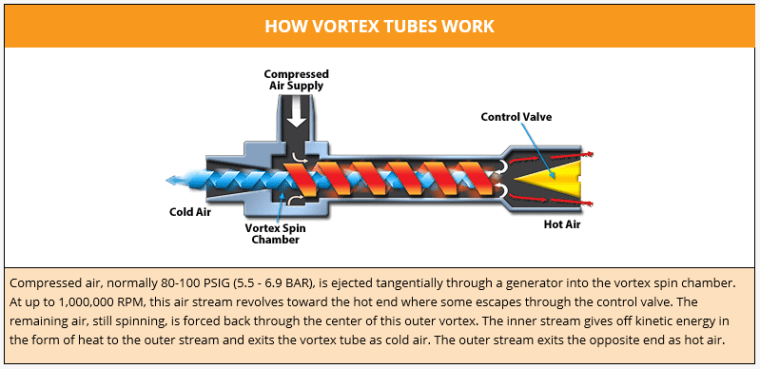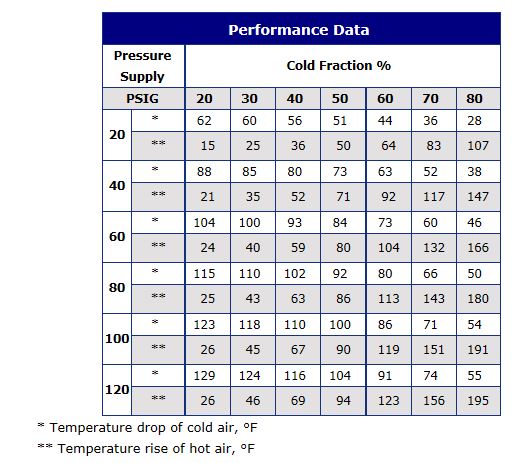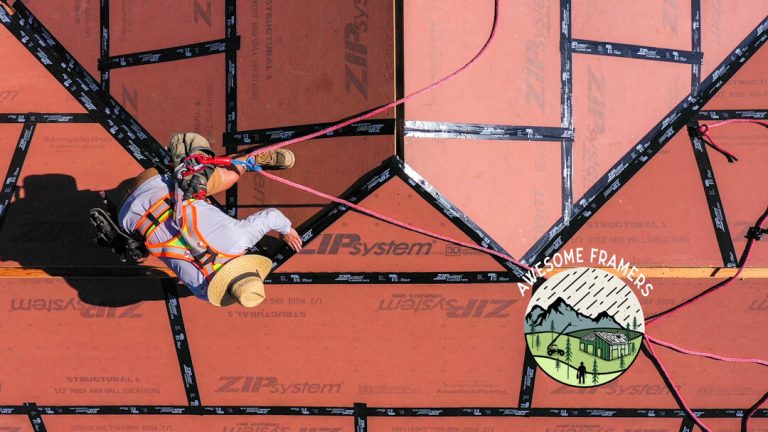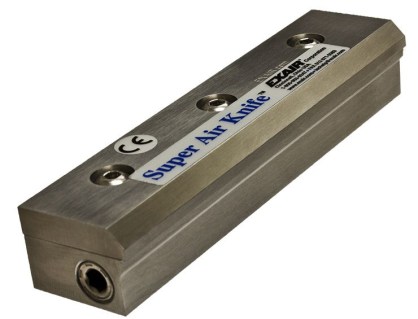Vortex Tube Cold Fraction and how it Affects Flow and Temperature Control
Vortex Tubes are the perfect solution when dealing with a variety of spot cooling applications. They use compressed air to produce a cold air stream and a hot air stream, with temperatures ranging from as low as -50°F up to +260°F (based on ambient supply temperature) and providing as much as 10,200 Btu/hr. of cooling capacity. By simply adjusting the valve in the hot end of the Vortex Tube, you are able to control the “cold fraction” which is the percentage of air consumed by the vortex tube that is exhausted as cold air versus the amount of air exhausted as hot air. Our small, medium and large Vortex Tubes provide the same temperature drop and rise, it’s the volume of air that changes with the various sizes.

When looking at the below performance chart, you will see that “Pressure Supply” and “Cold Fraction %” setting all play a part in changing the performance of the Vortex Tubes. Take for example, an operating pressure of 100 PSIG and cold fraction setting of 20%, you will see a 123°F drop on the cold side versus a 26°F temperature rise on the hot side. By the using the same Vortex Tube and keeping the operating pressure at 100 PSIG but changing the cold fraction to 80%, you will now see a 54°F temperature drop on the cold side and a 191° rise at the hot end.

We’ve looked at how the cold fraction changes the temperature, but how does it change the flow for the various Models?
Say you are using a Model # 3240 Medium Vortex Tube which consumes 40 SCFM @ 100 PSIG. Again with the cold fraction set at 80% (80% of the consumed compressed air out of the cold end), you would flow 32 SCFM at the cold air exhaust.
40 SCFM x 0.8 (80% CF) = 32 SCFM
Using the same Model # 3240 Medium Vortex Tube but now with a 20% cold fraction (20% of consumed compressed air out of the cold end), you would flow 8 SCFM at the cold exhaust.
40 SCFM x 0.20 (20% CF) = 8 SCFM
As you can see, to achieve the colder air temperatures, the volume of cold air being exhausted is reduced as well. This is important to consider when making a Model selection. Some other considerations include the operating pressure which also has a significant effect on performance. The compressed air supply temperature is important because the above temperatures are temperature differentials, so in the example of the 80% cold fraction there is a 115F temperature drop from your inlet compressed air temperature.
If you need additional assistance, you can always contact myself or another application engineer and we would be happy to make the best selection to fit your specific need.
Jordan Shouse
Application Engineer
Send me an Email
Find us on the Web
Like us on Facebook
Twitter: @EXAIR_JS



